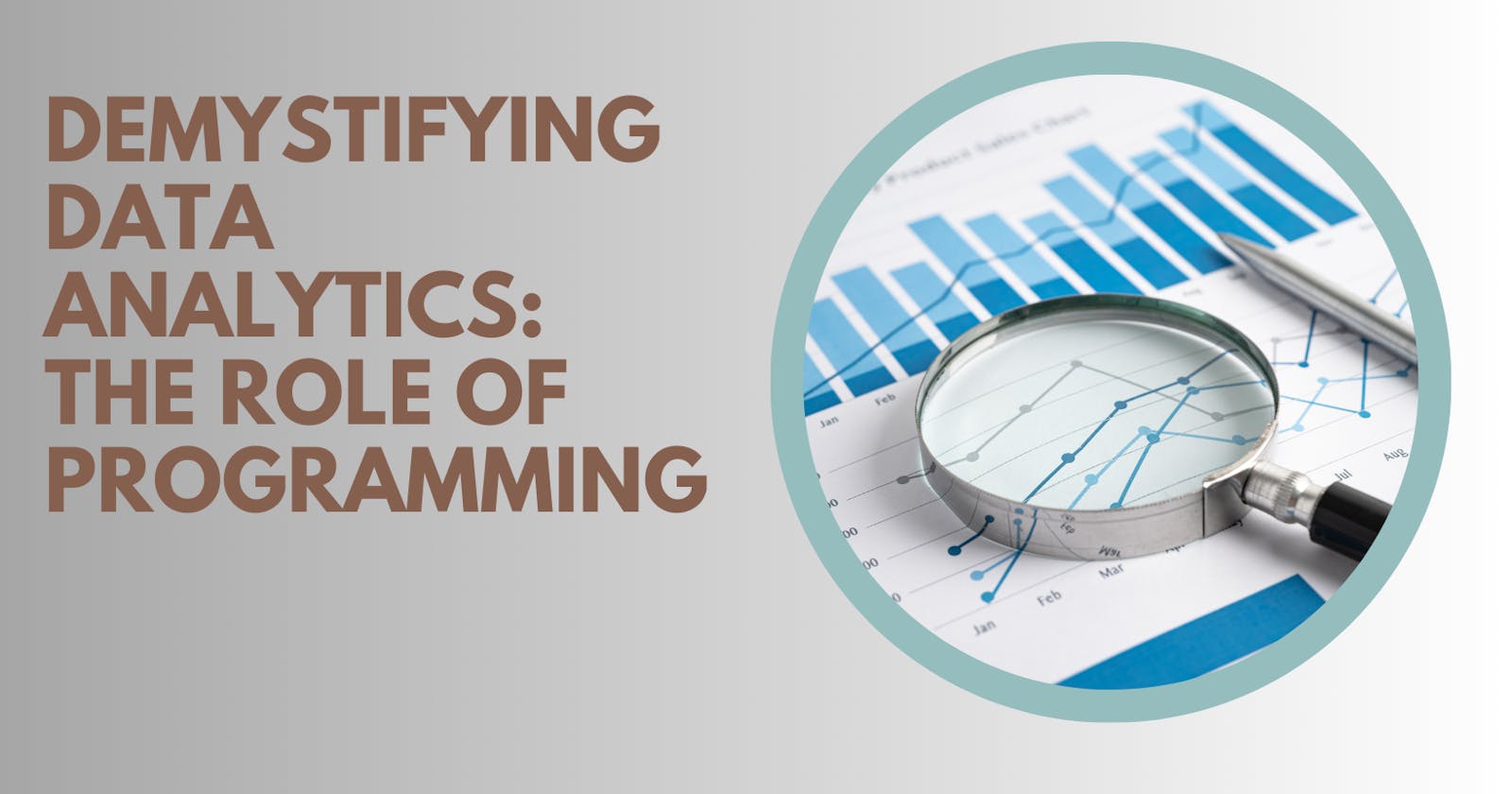In today's digital age, data analytics has emerged as a crucial tool for businesses and organizations to gain insights and make informed decisions. However, understanding the role of programming in data analytics can often seem daunting to newcomers. This article aims to demystify the concept by explaining the significance of programming in data analytics in an easy-to-understand manner.
What is Data Analytics?
Data analytics is the process of examining large datasets to uncover hidden patterns, correlations, and other useful information. It involves various techniques and tools to extract insights from data, which can be used to optimize processes, identify trends, and drive decision-making.
The Importance of Programming in Data Analytics
Programming plays a fundamental role in data analytics for several reasons.
Data Manipulation and Cleaning: Raw data is often messy and requires cleaning and transformation before analysis. Programming languages like Python and R provide powerful libraries such as pandas and dplyr, which enable data manipulation tasks like filtering, sorting, and aggregating.
Statistical Analysis: Data analytics involves statistical methods to uncover patterns and relationships within the data. Programming languages offer libraries like scipy and statsmodels in Python, and functions in R, which facilitate statistical analysis and hypothesis testing.
Machine Learning: Machine learning algorithms are essential for predictive analytics and classification tasks. Programming languages provide libraries like scikit-learn in Python and caret in R, which offer a wide range of machine learning models for data analysis.
Data Visualization: Visualizing data is crucial for communicating insights effectively. Programming languages offer libraries like matplotlib and seaborn in Python, and ggplot2 in R, which enable the creation of various plots and charts to visualize data trends and patterns.
Commonly Used Programming Languages in Data Analytics
While there are several programming languages used in data analytics, two of the most popular ones are Python and R.
Python: Python is a versatile programming language known for its simplicity and readability. It has a rich ecosystem of libraries specifically designed for data analysis and machine learning, making it a preferred choice for data scientists and analysts.
R: R is a statistical programming language widely used in academia and research communities. It provides extensive capabilities for statistical analysis, data visualization, and machine learning, making it suitable for complex data analytics tasks.
Getting Started with Programming for Data Analytics
If you're new to programming and interested in data analytics, here are some steps to get started.
Learn the Basics: Start by learning the fundamentals of programming, such as variables, data types, loops, and functions. Online platforms like Codecademy, Coursera, and Udemy offer beginner-friendly courses in Python and R.
Explore Data Analysis Libraries: Familiarize yourself with popular libraries for data analysis and visualization in your chosen programming language. Practice manipulating datasets and creating visualizations to gain hands-on experience.
Understand Statistical Concepts: Gain a basic understanding of statistical concepts such as mean, median, standard deviation, correlation, and regression. These concepts form the foundation of data analytics and are essential for interpreting data effectively.
Experiment with Machine Learning: Once you're comfortable with data manipulation and visualization, explore machine learning algorithms and techniques. Start with simple models like linear regression and gradually progress to more advanced algorithms as you gain confidence.
Practice Regularly: Like any skill, proficiency in programming for data analytics comes with practice. Work on real-world projects or participate in online coding challenges to apply your knowledge and sharpen your skills.
Conclusion
Programming plays a vital role in data analytics, enabling analysts and data scientists to extract valuable insights from large datasets. By learning programming languages like Python and R and mastering relevant libraries and tools, you can unlock the full potential of data analytics and make informed decisions that drive business success. Start your journey into the world of data analytics today and demystify the role of programming in unlocking the power of data. Join a Data Analytics Training Institute in Indore, Gwalior, Delhi, Noida, and all cities in India to gain the necessary skills and knowledge for a successful career in this rapidly growing field.

